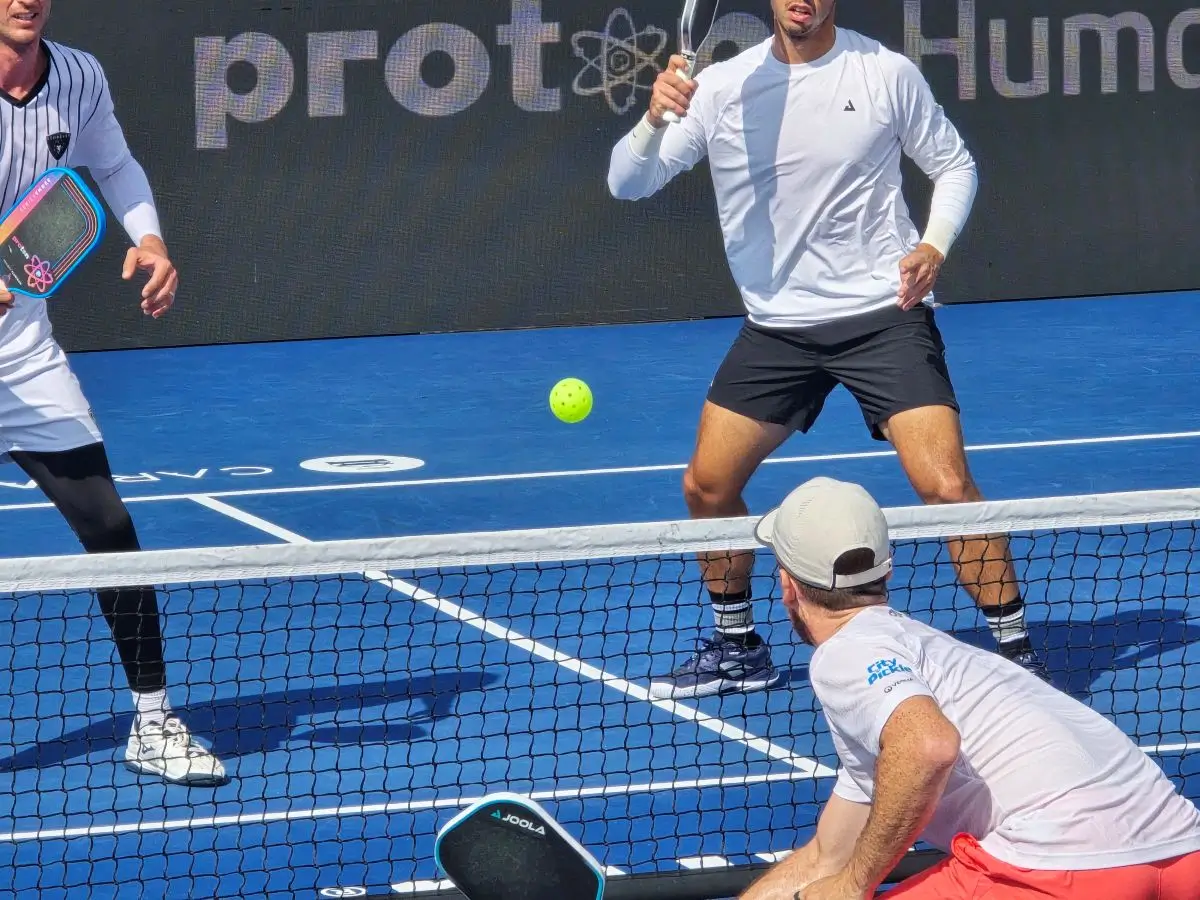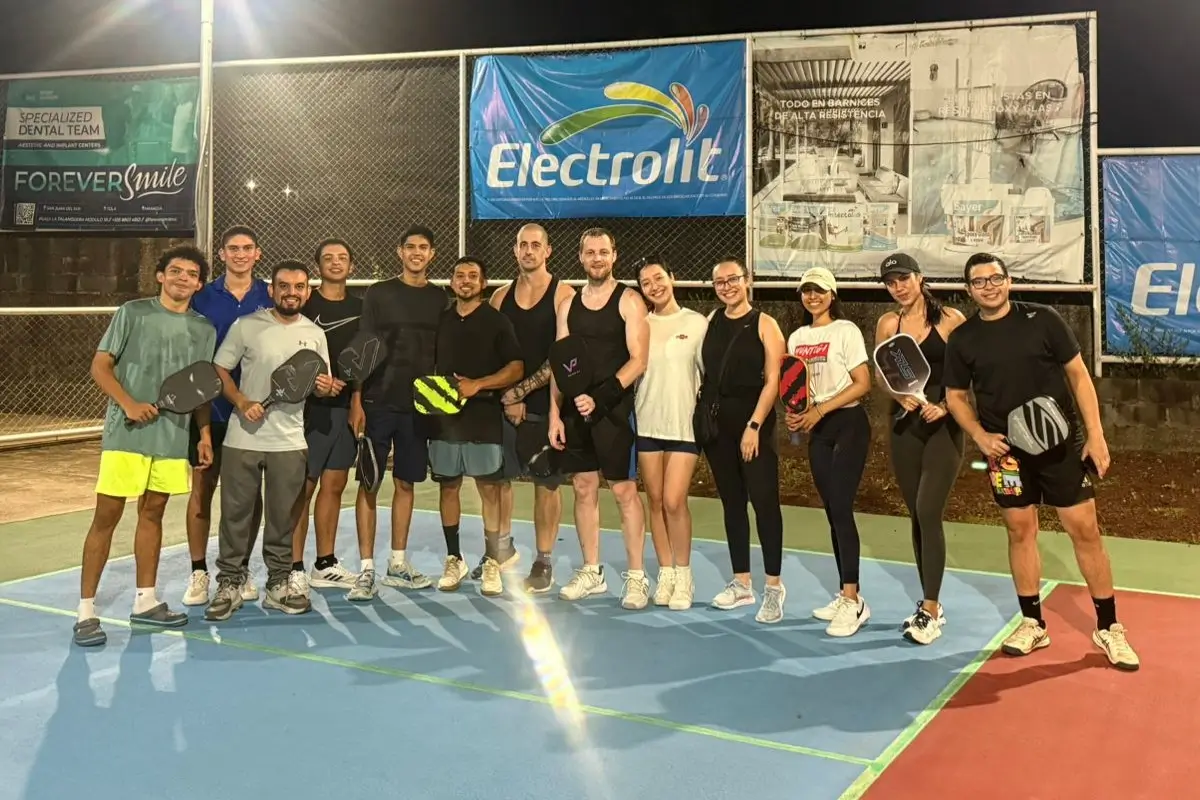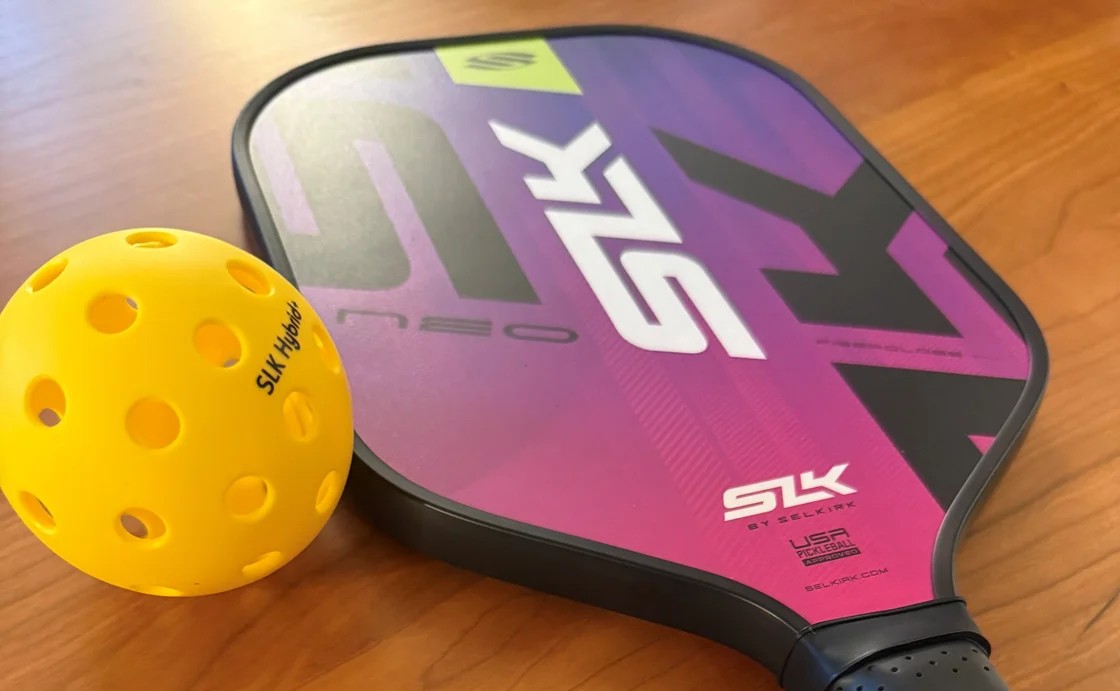Morning Reps and Revelation: A CEO’s Solo Pickleball Drill Session Before the PPA Challenger in Punta Gorda
Discover how solo pickleball drills like a focused inside-out forehand session can unlock major breakthroughs in performance. CEO Geoff Bourgeois shares some of his training before the PPA Challenger in Punta Gorda, and why scenario-based repetition is key to mastery.

The best breakthroughs don’t always happen when you want—they sometimes happen in solitude, with no audience but the morning dew.
Earlier this week, I found myself out on the court at 6am, alone with a ball machine and a couple hundred balls. It wasn’t just another drill session. It was one of those rare moments where training turns into revelation.
One hour. Two to three hundred reps. A surgical focus on one shot. What I uncovered shifted how I think about practice entirely.
What unlocked the breakthrough for me wasn’t drilling a specific shot—it was drilling a scenario.
The Reality of Late-Stage Prep at 43
Let’s not sugarcoat it. I’ve been logging more desk time than ideal leading into the PPA Challenger event in Punta Gorda this weekend. Business has demanded it. But competition doesn’t care about my calendar. So this past week, it’s been a game of making up for lost time—evening open plays, and solo drills with the ball machine before the sun really gets cooking.
The Drill Scenario: Inside-Out Forehand from the Runaround
For this session, I dialed in on a specific scenario: opponent hits an aggressive 50mph ball to deep middle T. I’m positioned just behind the baseline, slightly right so that the middle T is to my left foot (because I want to make it harder). My job? Run around that ball, get to my forehand, and rip an inside-out shot to the far-opposite corner—forcing my opponent to sprint and stretch.
This isn’t just a singles shot. It’s a valuable weapon in doubles too, especially for a left-side player who wants to punish a ball floating in the middle.
So out came the Lobster ball machine. Hopper loaded. Let’s get to work.
The First Hopper: Humility and Adjustment
The first 20 balls or so were humbling. I was clocking a 70-80% error rate—hitting into the net, sailing wide, missing my target deep in that back corner.
Here’s where the drill becomes more than just ball-striking. It becomes diagnostic. I wasn’t upset. I wasn’t frustrated. I was calibrating.
- Split-step timing: Off. Fixed it.
- Visual focus: Dialed in.
- Footwork adjustments: Lightening up, placing weight in the right spots, tuning push-offs from the edges of my feet.
This is the self-coaching mindset. No negative self-talk. I simply observe and make micro-adjustments—calmly, without judgment—and then let the results be what they are. Most importantly, I clear my mind of distractions and have fun.
By the end of the first hopper, my success rate climbed to 7 out of 10. A small but meaningful victory.
The Talent Code Break: Letting the Brain Breathe
Then came a critical moment: stepping away. According to The Talent Code, short rest periods allow the brain to consolidate new patterns. So I let my mind wander. Ironically, it wandered here—to capturing my thoughts for this post.
Two minutes later, back to business.
Second Hopper: Flow State Emerges
With a fresh hopper of balls, the results spoke for themselves:
- First 10 balls: 9 out of 10 success.
- Next 10 balls: 8 out of 10 success.
Now I was hitting pacey winners into that back corner with consistency. The early calibration work was paying off. My body, my “Self 2” in Inner Game parlance, was starting to play.
Expanding the Envelope: Variations on the Theme
Once I had the basic pattern grooved, I shifted into experimentation:
- Feign Inside-In, Deliver Inside-Out: Can I sell the body language of an inside-in and still hit a clean inside-out? Success rate: ~50-60%. Room for growth.
- Kinetic Chain Variations: Subtle differences in how I sequence my hips, shoulders, and arm through contact revealed two more ways to execute the inside-out shot.
What struck me was this: my body already knew these variations. I’d pulled them off in games, in flow states, without conscious thought. But drilling gave me the chance to isolate them, recognize them, and start systematizing them.
The Methodology of Deep, Explorative Drilling
This wasn’t just a hitting session. It was software architecture for the body.
- Select a scenario.
- Define the target outcome.
- Calibrate fundamentals through diagnostic feedback.
- Step away to allow neural consolidation.
- Return and groove the pattern into subconscious competence.
- Expand the envelope with variations and problem-solving.
Drills are not mere mechanical repetition. Think of them as creative acts. They’re self-authored jazz. And they do wonders for giving you the space to experiment, discover your envelope in different situations, and, ultimately, build your self-efficacy.
No negative self-talk. I simply observe and make micro-adjustments—calmly, without judgment—and then let the results be what they are. Most importantly, I clear my mind of distractions and have fun.
What Comes Next
The immediate next steps for me are clear:
- Capture the three inside-out forehand variations on video.
- Document the biomechanics in text.
- Refine error rates to 10-20% across all three versions.
- Develop shot selection decision trees based on incoming ball patterns and opponent psychology.
This is how I approach the game. Not as a grind, but as an engineering problem, an artistic expression, and a personal mastery challenge all at once.
In Closing: Why Pickleball Solo Drill Sessions Matter
Here’s what I took away: balancing play and drills isn’t just smart—it’s foundational. But more importantly, not all drills are created equal. The quality and intentionality behind your reps matter.
What unlocked the breakthrough for me wasn’t drilling a specific shot—it was drilling a scenario. That difference matters. By recreating a real game situation, I unearthed multiple natural shot variations—each one tuned to a subtle difference in setup, timing, contact point, and body position. This kind of deep, explorative, scenario-based work is now a core part of how I train.







